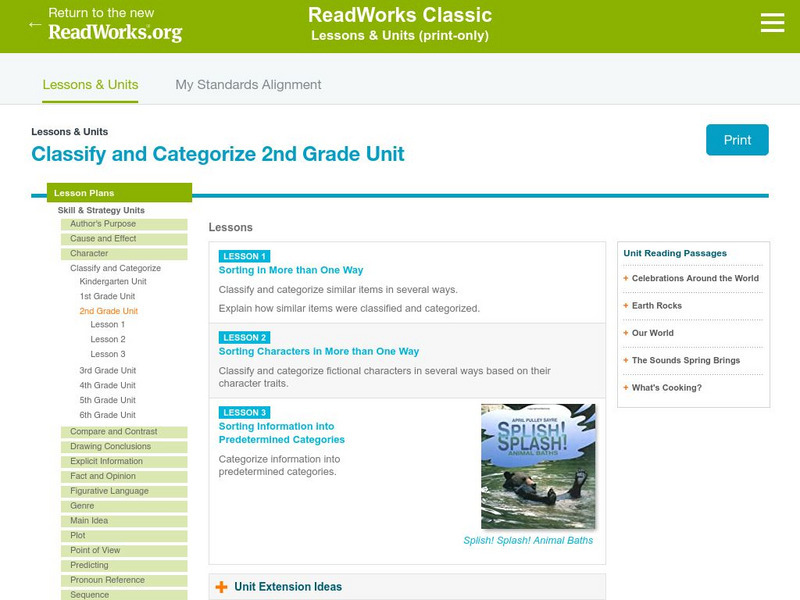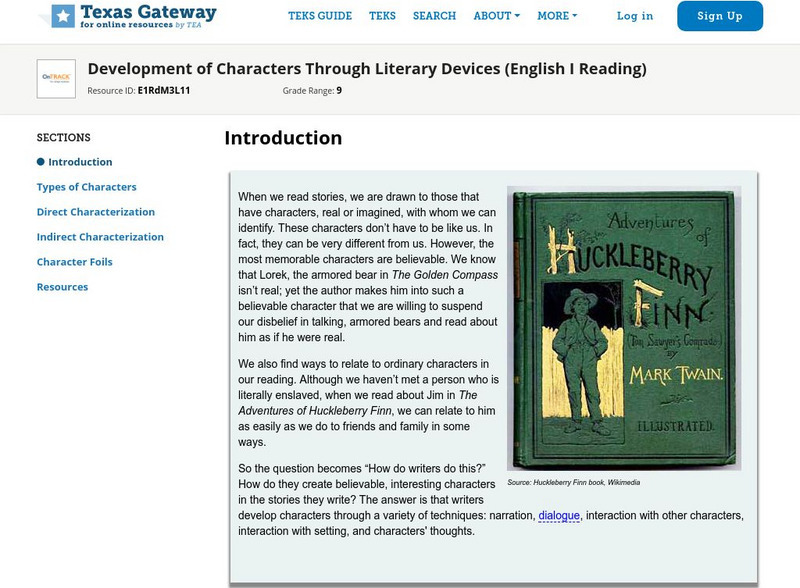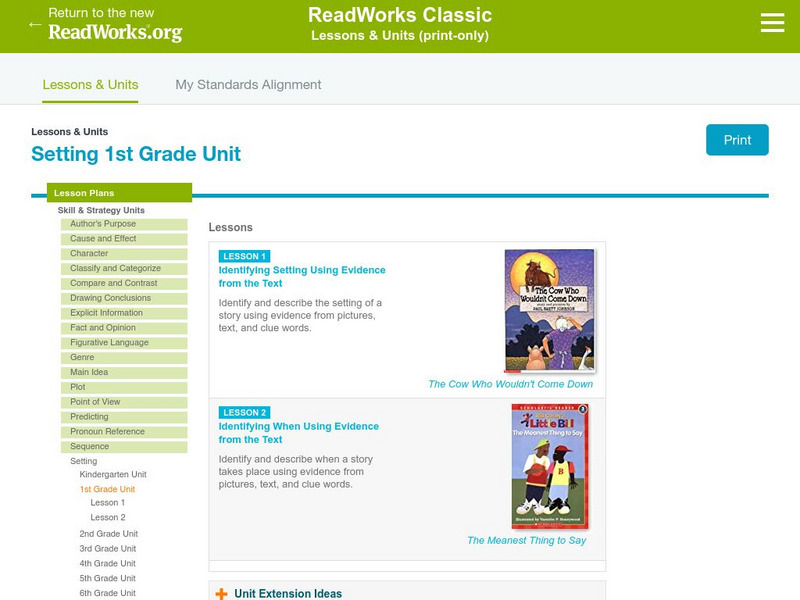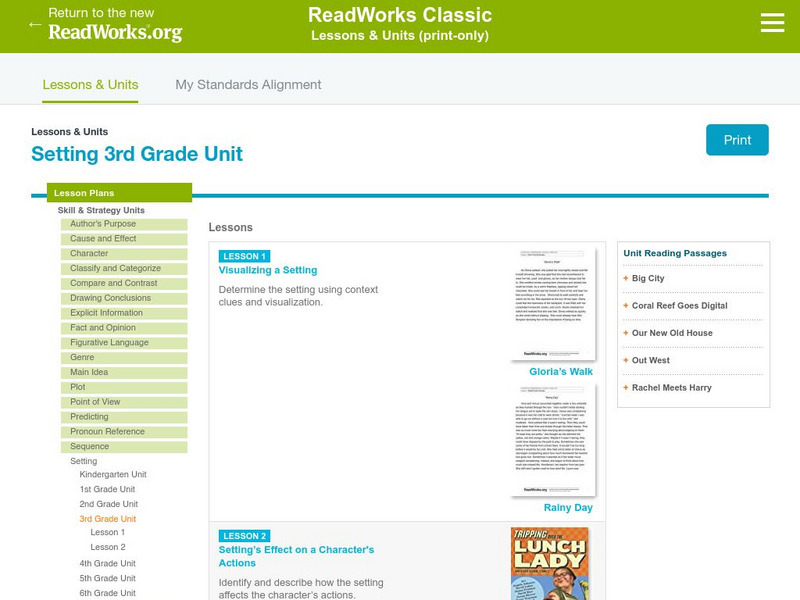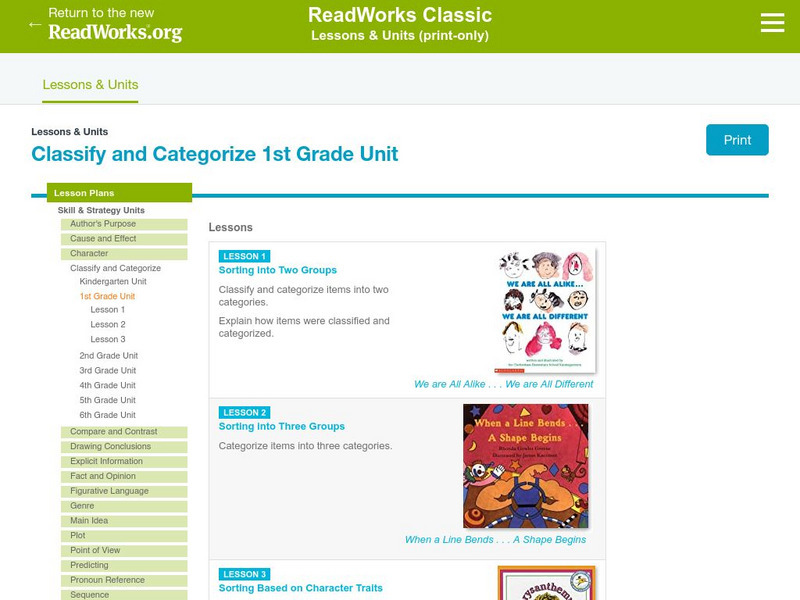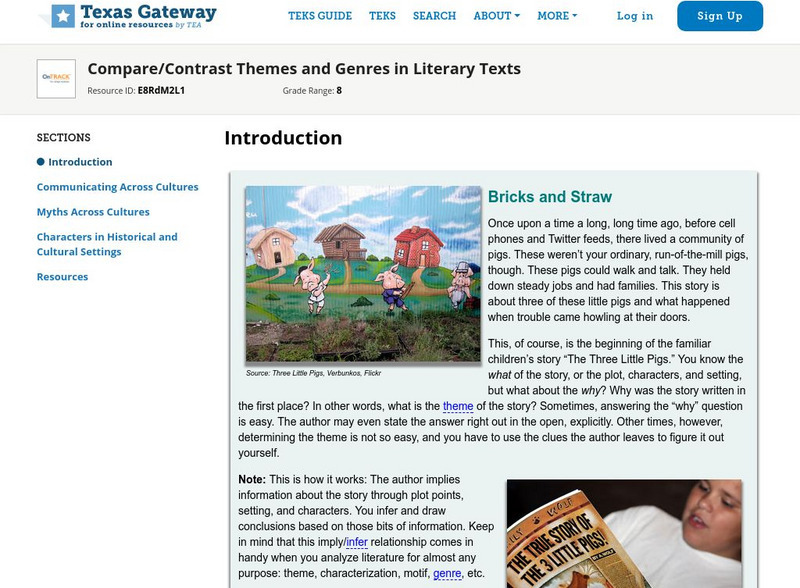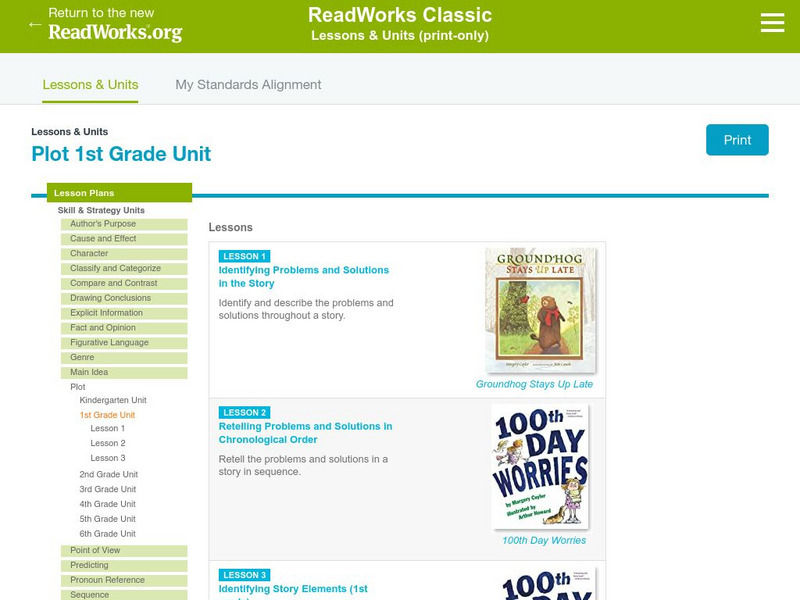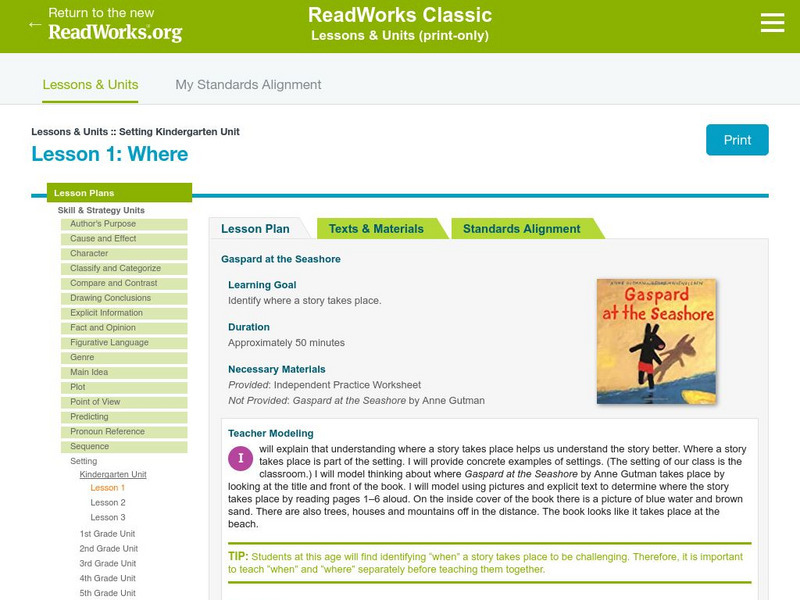Hi, what do you want to do?
Sophia Learning
Sophia: Characters and Setting
This lesson introduces the connection between characters and setting in fiction writing.
SMART Technologies
Smart: Developing Characters and Settings
In this activity provided by SMART, students will give reasons why they feel characters are important in a story. Students will explore how to create effective characters and settings in their own writing by using a character web.
National Endowment for the Humanities
Neh: Edsit Ement: Variations in Plot and Setting
Although Disney's version of Cinderella is most popular in America, hundreds of versions exist across many cultures. This resource provides lessons, which examine the similarities and differences in literary elements among many versions...
Alabama Learning Exchange
Alex: And Then There Were None: Casting the Characters
Students will work in pairs to cast their own movie version of the novel. Students must have a knowledge of the characters and setting from the novel. Casting of the characters must correlate with the character traits mentioned in the book.
Other
Fiction Factor: The Importance of Setting
An interesting article concerning the importance of setting to any piece of fiction. Gives good information about how setting affects characters and "world-building."
Better Lesson
Better Lesson: rl.k.3 With Prompting and Support, Identify Characters, Settings,
This landing page provides different lesson plan choices on teaching RL.K.3 With prompting and support, identify characters, settings,
Read Works
Read Works: Fourth Grade: Two Lesson Unit: Setting
[Free Registration/Login Required] A two-lesson plan unit on setting where students use book The Three Brothers: A German Folktale by Carolyn Croll to show how the setting effects the plot of a story, and the book Even More Short and...
Read Works
Read Works: Lesson 2: Good and Evil Characters
This lesson will allow students to understand why Fairy Tales have good and evil characters and identify good and evil characters in a Fairy Tale.
Penguin Publishing
Penguin Random House: "Of Mice and Men" Teacher Guide [Pdf]
Six-page guide covering pre-reading tips, plot, characters, symbols, setting, and post-reading activities. This is a .pdf file.
Read Works
Read Works: Classify and Categorize 2nd Grade Unit
[Free Registration/Login Required] A series of three lesson plans designed to teach students to classify and categorize items, characters, and information. The third instructional activity is based on the book Splish! Splash! Animal...
Texas Education Agency
Texas Gateway: Development of Characters Through Literary Devices
In this lesson, students learn how writers develop characters through a variety of techniques: narration, dialogue, interaction with other characters, interaction with setting, and characters' thoughts. RL.9-10.3 Analyzing Characters,...
Texas Education Agency
Texas Gateway: Compare/contrast Themes and Genres in Literary Texts
Determining the theme is not easy; you have to use the clues the author leaves to figure it out yourself. The author implies information about the story through plot points, setting, and characters. You infer and draw conclusions based...
Texas Education Agency
Texas Gateway: Development of Characters Through Literary Devices
This lesson focuses on how writers develop characters through a variety of techniques: narration, dialogue, interaction with other characters, interaction with setting, and character's thoughts.
PBS
Pbs Learning Media: Interpreting Characters, Setting, Plot, & Theme: Triangle...
Students will view video documenting the real-life story of the Triangle Shirtwaist Factory fire in 1911. Students will complete a story elements graphic organizer. This organizer will help them distinguish various story elements and put...
Read Works
Read Works: Setting 1st Grade Unit
[Free Registration/Login Required] A series of three lesson plans designed to teach students to use pictures and word clues to determine the setting of fiction texts. Lessons are based on the books The Cow Who Wouldn't Come Down by Paul...
Read Works
Read Works: Setting Kindergarten Unit: When (Seasons, Day, or Night)
[Free Registration/Login Required] A lesson plan, based on Look! Snow! by Kathryn O. Galbraith, in which students learn how to utilize text and picture clues to determine basic time elements of setting in a story. Students follow this...
Read Works
Read Works: Grade 2: Two Lesson Unit: Setting
[Free Registration/Login Required] A set of two lesson plans designed to teach students to use context clues to identify the setting and changes within it. Lessons are based on the books Bigmama's by Donald Crews and The Stories Julian...
Read Works
Read Works: Setting 3rd Grade Unit
[Free Registration/Login Required] This is series of two lesson plans designed to teach students to visualize the setting and determine its effect on characters in a fiction text. Lessons are based on two short texts and the book...
ArtsNow
Arts Now Learning: Cultural Characters: World War Ii Conversations [Pdf]
In this lesson, students use photos of people in real-life World War II events as a springboard for composing dialogue between the people in the photographs. Students then work in pairs to create a scene set in World War II and present...
Read Works
Read Works: Classify and Categorize 1st Grade Unit
[Free Registration/Login Required] A three-lesson plan unit on classifying and categorizing through which students learn how to sort items into two and three categories and explain how each group is classified. Finally, students...
Texas Education Agency
Texas Gateway: Compare/contrast Themes and Genres in Literary Texts
In this lesson, you will learn how to compare and contrast themes and genre across history and cultures.
PBS
Pbs Learning Media: Daniel Tiger's Neighborhood: Life's Little Lessons: Disappointment
Whether the disappointment comes from unmet expectations at a birthday party or from another disappointment such as not getting a favorite snack at the grocery store or missing out on playtime with a friend due to illness, it is...
Read Works
Read Works: Plot 1st Grade Unit
[Free Registration/Login Required] A series of three lesson plans designed to teach students to identify problems and solutions in fiction text and to retell a story's problem and solution in sequence. Students learn to identify the plot...
Read Works
Read Works: Setting Kindergarten Unit: Where
[Free Registration/Login Required] Use the book Gaspard at the Seashore by Anne Gutman to teach clues students can use to determine where a story takes place. The book must be provided by the teacher, but downloadable worksheets for...







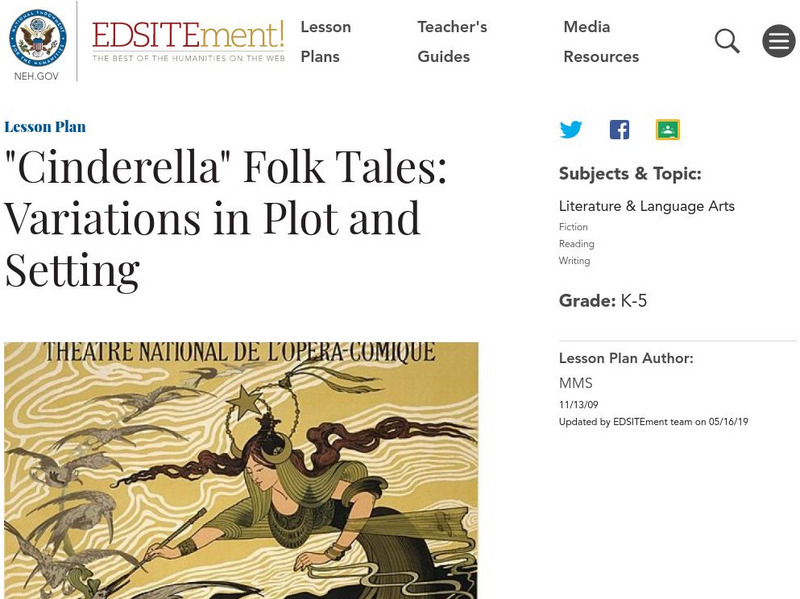

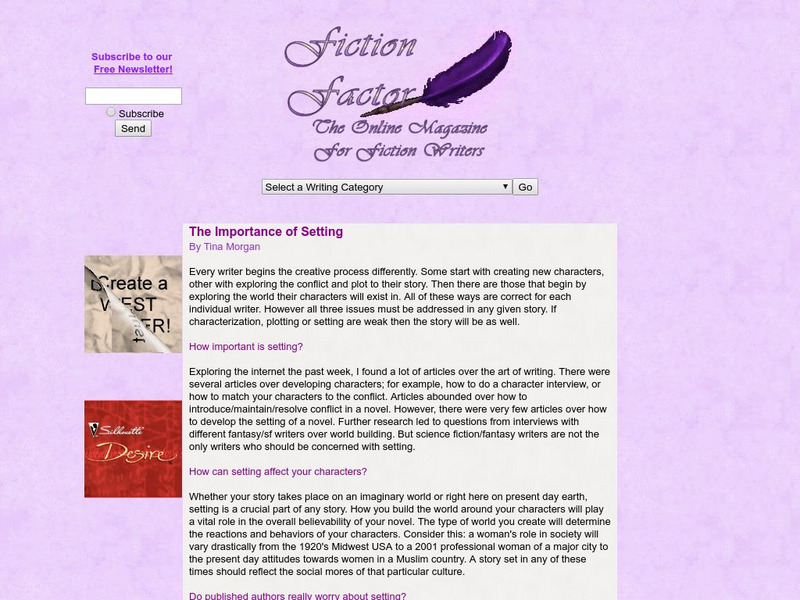


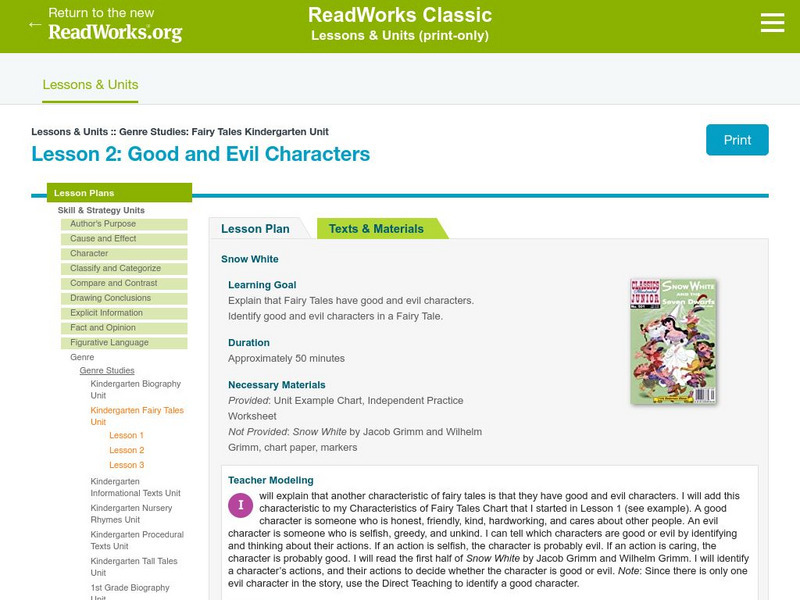
![Penguin Random House: "Of Mice and Men" Teacher Guide [Pdf] Unit Plan Penguin Random House: "Of Mice and Men" Teacher Guide [Pdf] Unit Plan](https://static.lp.lexp.cloud/images/attachment_defaults/resource/large/FPO-knovation.png)
